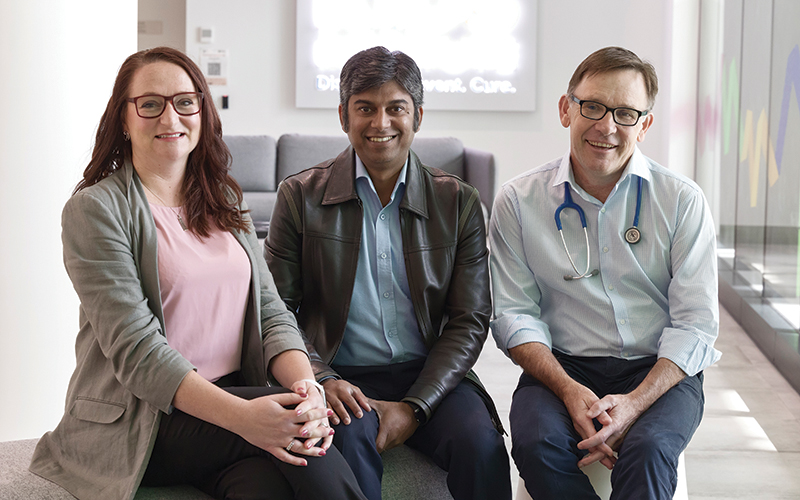Search
Showing results for "early life"
Find out how The Kids Research Institute Australia works with Government to influence policy and practice.
On this Research Impact page, we showcase real game-changers - research that changes the very way other scientists around the world think and approach challenges. The far-reaching impact on children and families for all the stories shown on these pages is both exciting and significant.
Meet the speakers Prof. Bob Hancock Title: Canada Research Chair in Health and Genomics; Director, Centre for Microbial Diseases and Immunity
Research
A study to determine the safety and immunogenicity of 10-valent and 13-valent pneumococcal conjugate vaccines in Papua New Guinean childrenDeborah Peter Peter Lehmann Jacoby Richmond AO, MBBS, MSc BA (Hons) MSc MBBS MRCP(UK) FRACP Honorary Emeritus Fellow Biostatistician Head, Vaccine
Research
Impact for Tourette’sImpact for Tourette’s is Australia’s first national project evaluating the unmet needs of people with Tourette syndrome and other tic conditions.
Research
The measurement properties of tests and tools used in cystic fibrosis studies: a systematic reviewThere is no consensus on how best to measure responses to interventions among children and adults with cystic fibrosis (CF). We have systematically reviewed and summarised the characteristics and measurement properties of tests and tools that have been used to capture outcomes in studies among people with CF, including their reliability, validity and responsiveness. This review is intended to guide researchers when selecting tests or tools for measuring treatment effects in CF trials. A consensus set of these tests and tools could improve consistency in how outcomes are captured and thereby facilitate comparisons and synthesis of evidence across studies.
Research
Metabolic and Psychological Impact of a Pragmatic Exercise Intervention Program in Adolescent and Young Adult Survivors of Pediatric Cancer-Related Cerebral InsultAdolescent and young adult survivors of childhood brain tumors and cranial irradiation should be screened for metabolic and psychological well-being
Research
Clinical, Radiologic, Pathologic, and Molecular Characteristics of Long-Term Survivors of Diffuse Intrinsic Pontine GliomaWe report clinical, radiologic, and molecular factors that correlate with survival in children and young adults with diffuse intrinsic pontine glioma
Research
Radiographic and visual response to the type II RAF inhibitor tovorafenib in children with relapsed/refractory optic pathway glioma in the FIREFLY-1 trialDue to their anatomical locations, optic pathway gliomas (OPGs) can rarely be cured by resection. Given the importance of preserving visual function, we analyzed radiological and visual acuity (VA) outcomes for the type II RAF inhibitor tovorafenib in the OPG subgroup of the phase 2 FIREFLY-1 trial.

Despite respiratory syncytial virus (RSV) being the leading cause of hospitalisations in the first year of life, there is currently no routine preventative option for otherwise healthy babies.
